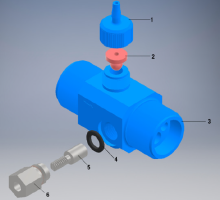GPM filling a 5 gallon bucket, flow rate is 300/s , where s represents the number of seconds to fill the bucket. But that is not quite what you need.
Suppose your pressure switch is set for 40/60 psi, with the precharge set at 35 psi because you have a jet pump. I think you want to know the flow rate while filling the pressure tank when the backpressure is maybe 36 psi.
It seems to me that you could get close by looking at the drawdown on the pressure tank and how long it takes for the tank to fill to cutoff.
We know that the flow rate will be bigger at cut-on than at cut off, but I think you could pick your desired gpm at 36 psi on the pump curve and see what the gpm is at maybe 34 psi higher. A straight-line aproximation could determine an average fill rate in the middle of your range. Then use that to pick a target tank-fill rate. For drawdown, you could measure, or you could aproximate between about 25 and 30% of nominal capacity.
Also note that usually the tank does not empty of water before the pump starts delivering.
When the pump turns on for your timing test, you need to stop other water consumption.
As the cutoff pressure gets closer to the max pressure of the pump, I think this process would get less useful-- the pump curve would be much farther from linear.
Make sure that valve never gets shut.
I am not a pro.

